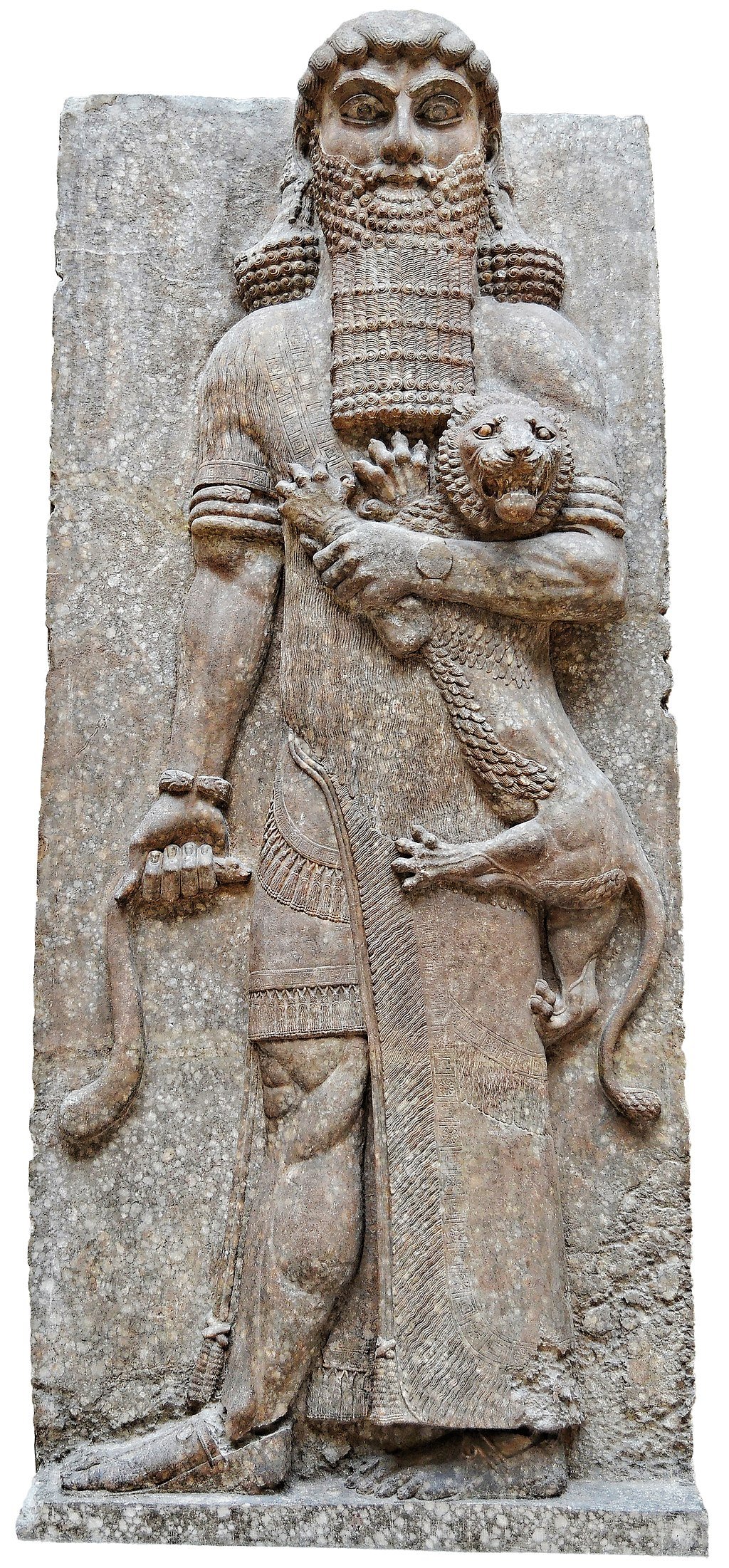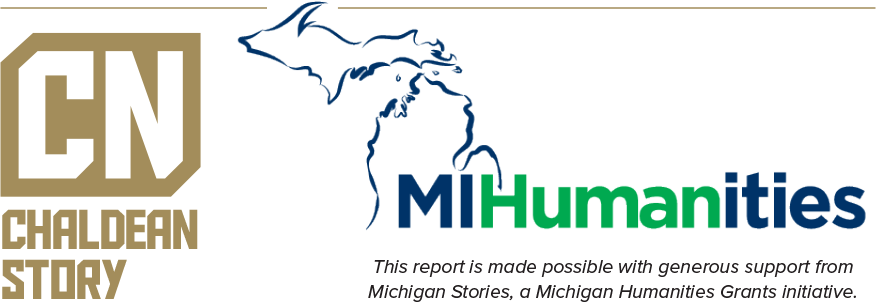Weaving a Narrative
CCF staff and volunteers dressed in traditional village folk dress.
The Rich Complexity of Middle Eastern Folklore
By Dr. Adhid Miri & Sarah Kittle
“Forget death and seek life!” With these encouraging words, Gilgamesh, the star of the 4,000-year-old epic poem, coins the world’s first heroic catchphrase.
Dating back to ancient Mesopotamia, the Epic of Gilgamesh stands as one of the oldest known works of literature in human history. This epic poem, written on clay tablets in cuneiform script, tells the story of Gilgamesh, the legendary half-god king of Uruk, and his quest for immortality. Through its portrayal of heroic deeds, friendship, and the inevitability of mortality, the Epic of Gilgamesh reflects the concerns and values of society in ancient Mesopotamia.
At the heart of the epic lies the friendship between Gilgamesh and Enkidu, a wild man created by the god Aruru to challenge Gilgamesh’s tyranny, which was reported by his own subjects. The bond between Gilgamesh and Enkidu transcends the boundaries of social status and power, offering a reflective exploration of companionship and human experience.
As Gilgamesh embarks on his journey to seek eternal life, he encounters obstacles that force him to confront the limits of his own mortality. Ultimately, he learns that true immortality lies not in physical longevity, but in the legacy one leaves behind.
A carving of Gilgamesh conquering the lion.
The ancient cuneiform tablet known as the Gilgamesh Dream Tablet is one of the world’s oldest surviving works of literature and one of the oldest religious texts. It was found in 1853 as part of a 12-tablet collection in the rubble of the library of Assyrian King Assur Banipal.
The Gilgamesh Dream Tablet was looted from an Iraqi museum during the Gulf War in 1991. The tablet reappeared in the UK in 2001. An American art dealer bought it from a London-based Jordanian family in 2003 before sending the piece to the US without declaring its true nature to customs.
It was then sold to antique dealers in 2007 for $50,000, under a false certificate of origin. The tablet was sold once again in 2014 for $1.67 million to the owners of Hobby Lobby, the Green family, conservative Christians who wanted to display it at their Museum of the Bible in Washington.
On September 23, 2021, the rare Sumerian poem on cuneiform tablet was returned to its rightful owners and country of origin, Iraq.
Storytelling throughout history
Middle Eastern folklore is a treasure trove of tales that have been passed down through generations, often orally, weaving together history, culture, and imagination. However, within this vast expanse of stories, Iraqi folklore holds a unique position, offering insights into the country’s rich and diverse heritage and the enduring spirit of its people.
Moving forward in time, we encounter another cornerstone of Middle Eastern folklore: One Thousand and One Nights, also known as Arabian Nights. This collection of tales, framed within the narrative of Scheherazade, a clever storyteller who captivates King Shahryar with her stories to save her own life, offers a kaleidoscopic view of the cultural mosaic of the Islamic Golden Age. From the adventures of Aladdin and Sinbad to the moral fables of animals and jinn, One Thousand and One Nights showcases the creativity and ingenuity of Middle Eastern storytelling.
Iraqi tales occupy a distinctive place, reflecting the country’s rich history and diverse cultural heritage. The folklore encompasses a wide array of stories, legends, and myths that have been passed down orally from generation to generation. These tales often blend elements of ancient Mesopotamian mythology with influences from Islamic, Persian, and Kurdish traditions, resulting in a tapestry of narratives that is uniquely Iraqi.
Western audiences have grown used to the marauding heroes of Arabic folklore. Characters like Sinbad the Sailor and Ali Baba instantly conjure images of hidden treasure and desperate sword fights. But in the Middle East itself, many people prefer a more down-to-earth figure: Juha, a wise old fool, and his long-suffering donkey. Whether outwitting his adversaries or offering sage advice in the guise of folly, Juha represents the wisdom of the common people and the resilience of the human spirit in the face of adversity.
Another prominent figure in Iraqi folklore is the legendary Abu Zayd al-Hilali, whose adventures have been immortalized in poetry and folk songs. Known for his courage, wit, and chivalry, Abu Zayd embodies the ideals of honor and bravery that resonate deeply within Iraqi culture. His exploits, which often involve encounters with supernatural beings and epic battles, serve as a source of inspiration and pride for Iraqis across generations.
Iraqi folklore also encompasses a rich tradition of mystical tales and legends, such as the story of the Seven Sleepers of Ephesus, which has roots in Christian, Islamic, and Jewish mythology. This tale, which tells of seven Christian youths who miraculously slept for centuries in a cave, reflects the varied nature of Iraqi culture and its ability to assimilate diverse religious influences.
Modern day storytellers
Honoring the enduring legacy of the past while embracing the diversity and creativity of the present, modern day Iraqi American story tellers use new formats to reach their audience. Jacquelyn Santo, author of the children’s book, “Sweet Dreams, Habibi,” said, “It has been wonderful to be able to use social media to connect with other moms and see photos of children enjoying the book.” She added, “Being able to share snippets of the book has been a great way to allow parents to get a little preview before buying.”
Assyrian Chaldean author Christina Salem shared a story about her trip to Iraq and encounter with a sculpture of the popular mythical creature, the Lamassu. She explained how the creature was a symbol of the Assyrian kings’ power and was meant to protect it. “I captured a photo in a landmark home in Erbil and accompanied it with this as the caption [the definition from Britannica].” Salem goes on to say, “Many westerners were visiting at the time, and I feel this inspired and set the tone for many to capture the same moment I saw echoed on social media during my stay there.”
Weam Namou, author and executive director of the Chaldean Cultural Center, says, “I integrate words, foods, traditions, real-life characters, and even songs to tell modern Chaldean stories.” She explains further, “Using contemporary language that is concise and relatable allows readers from diverse backgrounds to connect with and immerse themselves in the narratives.”
Namou, an award-winning author of ten books, says she was influenced by her homeland’s folklore including the Epic of Gilgamesh, which has a flood story like that of Noah in the Bible, and the story of Sargon the Great, whose account mirrors that of the biblical Moses.
She shows how she uses tradition to create new stories, such as that of Pomegranate, her novel that was made into a feature film. “The main character, Niran, is a poet who channels Enheduanna, King Sargon’s daughter and the first credited writer in history.” She explains, “By immersing herself in Enheduanna’s poetry, Niran breathes life into her spirit, making her an active participant in the film.
“My storytelling predominantly revolves around nonfiction and memoir genres. It incorporates a rich tapestry of history, culture and heritage. Even within my novels, I often interweave true stories that provide readers with a profound understanding of the Chaldean people, their contemporary challenges, and their way of life.”
Christina Salem, an activist who self-published a book called “#TGIMITB - the girl I met in the bathroom,” says, “When storytelling I try to incorporate as many layers that attribute to the story as I can in whatever portrayal I’m using.” She explains, “I enjoy putting together as many pieces of art in various forms into every masterpiece I create.”
Santo says, “Throughout the book [“Sweet Dreams, Habibi”], I include many traditional elements. For example, on the first page, I have Assyrian inspired art in the background and Middle Eastern food represented on another page.
“I also wanted to celebrate the diversity of Iraq.” She goes on. “On one of my favorite pages, all the adults are sitting around a table playing cards and drinking chai. One of the women has a hajib on.”
Honoring the diversity and creativeness of their people, Chaldean storytelling not only preserves the past but also serves as a guiding light for future generations, imparting invaluable lessons of resilience, wisdom, and interconnectedness.
As the world continues to evolve, the tales of the Chaldean people remain a source of inspiration, reminding us of the profound impact that stories have in shaping our understanding of ourselves and the world around us.



